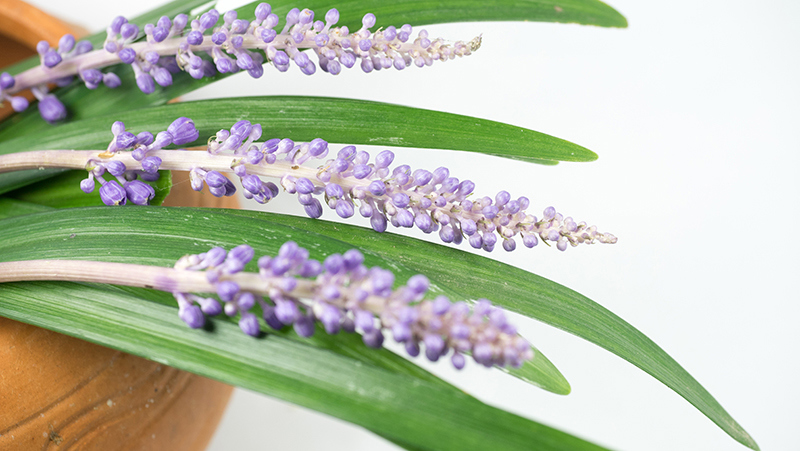Yates Account
Join now
Create a Yates account today!
Sign up to join the Yates Garden Club for monthly e-mails packed with seasonal inspiration, tips for success & exclusive promotions.
Plus if you’re a Garden Club member you can take part in the Yates Growing Community - a blog to share successes, get advice & win prizes in fun challenges along the way!

Forgot password
Enter the email address associated with your account, and we'll email you a new password.

If you are looking for a small strappy leaved plant that is great for borders, requires minimal care and provides small flowers in summer to autumn - you can’t go past Liriopes (Liriope spp.) These plants are widely used in landscape plantings due to their tough nature and, depending on the variety, can tolerate full sun to shade. They are also available in a number of variegated forms and flower colours in purple, pink and white. Also a great choice to fill in that bare spot in the garden.
How to grow Liriope in a garden
- Choose a position with well drained soil. Depending on the variety, Liriope can grow in either full sun or dappled shade, check the label for further details. However, sunnier positions will promote better flowering and growth.
- Enrich the soil with Yates Thrive Natural Blood & Bone with Seaweed. If the soil is clay based, add gypsum and fork in well.
- Dig the planting hole twice as wide and to the same depth as the root-ball. Remove the plant from the container and gently tease the roots.
- Position in hole and backfill, gently firming down. Form a raised doughnut shaped ring around the plant, creating a well so that water will go where it’s needed most. Water in well.
- Mulch with an organic mulch like woodchip or pea straw, keeping it away from the base of the plant.
- Water deeply, once or twice a week, depending on weather conditions, allowing to dry out slightly in between waterings.
- During the growing and flowering season feed with Yates Thrive Natural Roses & Flowers Organic Based Pelletised Plant Food. TIP: for an added boost apply Yates Thrive Natural Roses & Flowers Plant Food Concentrate.

How to grow Liriope in a pot
- Choose a pot at least 300mm wide.
- Depending on the variety, Liriope can grow in either full sun or dappled shade, check the label for further details. However, sunnier positions will promote better flowering and growth.
- Fill the pot with quality potting mix, such as Yates Nature's Way Organic Flower Mix.
- Remove the plant from the container and gently tease the roots.
- Position in hole and backfill, gently firming down. Water in well.
- Water deeply, once or twice a week, depending on weather conditions, allowing to dry out slightly in between waterings.
- Feed with Yates Thrive Natural Roses & Flowers Plant Food Concentrate.
Growing tips
- To keep the plant looking at its best, regularly remove any of the older or damaged leaves.
- This plant can be easily propagated through division in spring by carefully removing it from the ground or the pot and dividing into separate clumps with a sharp spade.
- The most common species available is Liriope muscari. There are many different varieties available from white, purple and pink flowering.
Orange trumpet vine, with its brilliant cascading masses of orange tubular flowers, is one of the most spectacular winter flowering climbers.
Spring Stars
Spring Stars are a versatile addition to any garden with delightful lavender-blue, star shaped blooms.
Flax
Flaxes (Phormium spp.) are highly versatile plants which don't mind swampy or dry conditions. Great for large pots or planted en-masse in garden beds.
Proteas
Not just any old blossom, protea flowers are blooms with attitude. If you can give them full sun and reasonable drainage, proteas will love you.
Recommended products
Yates Thrive Natural Roses & Flowers Plant Food Concentrate
Developed for boosting prolific beautiful flowers of roses and other flowering plants. Feeds through both leaves and roots for fast results.
Yates Thrive Natural Blood & Bone with Seaweed
A certified organic garden input boosted with NZ Seaweed to gently nourish plants, enrich the soil and encourage a strong healthy root system.















Share
Share this article on social media